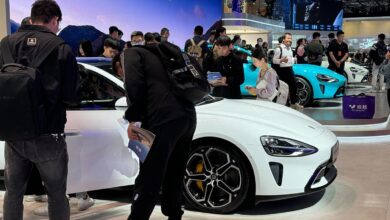Testimonial from Xavier, Electric Vehicle Owner

Hello everyone and welcome to Tesla Mag. Today, we are tackling a subject little discussed by owners and brands of electric cars: the behind the scenes of electric charging at home. We collected the testimony of Xavier, owner of an electric vehicle, who shares with us his surprising discoveries.
Xavier’s Testimony: Behind the Scenes of Electric Charging
Hello everyone, my name is Xavier and I have owned an electric vehicle for two years now. I recently discovered some aspects of home charging that are worth sharing.
Would you like a quote for the installation of a charging point or station?
The Beginnings: Installation and Monitoring
To better understand my electricity consumption, I installed an EV Energy socket from Elgado. This outlet allows me to monitor my car’s charging in real time and collect accurate voltage and amperage data.
The procedure is simple: just plug the Elgado socket into the charger, connect it to the wall and start charging. After 16 hours and 18 minutes, my car showed 100% charge, adding 33 kWh to the battery according to the on-board computer. However, this measurement is not precise enough to determine whether it is 33.00 or 33.99 kWh.
The Reality: Consumption Higher Than Expected
Checking the EV Energy app, I discovered that the outlet had calculated an actual consumption of 37.63 kWh. This represents a difference of 10.71% compared to the car data, or an excess consumption of 3.64 kWh spread over the entire duration of the charge. This excess consumption corresponds to an increase of 223 watts per hour for the home charger.
Economic and Ecological Consequences
This overconsumption has a direct impact on my charging costs. For this session, my bill went from €9.52 to €10.54. Over a distance of 100 km, this translates into an increase of 57 cents. For me, this represents a significant additional cost over the year.
I had already observed this phenomenon with my previous electric car, a BMW i3, where I noted an excess consumption of 16.59%. This experience taught me that this overconsumption is common, but rarely discussed.
Impact on Public Charging Stations
The problem is similar, or even worse, at public charging stations. For example, during a trip to the south of France, using energy-intensive equipment while charging, I noticed even greater overconsumption. At a public terminal, where the kWh is more expensive than at home, this additional cost becomes significant.
Call for Transparency
I think it is crucial to include these additional costs in the profitability calculations of electric vehicles. Manufacturers should include this surplus in the consumption displayed for better transparency. For example, if a car consumes 20 kWh/100 km, it would be more honest to announce a consumption of 22 kWh/100 km, taking into account charging losses.
Conclusion
Thank you for taking the time to read my testimony. I hope my experience can help other electric vehicle owners better understand their actual consumption and plan their costs more accurately. Do not hesitate to share this article and raise awareness among those around you. Together we can promote a more transparent and efficient use of electric vehicles.



